Modes - Reference One
The Modes as Scales
As scales, modes have a different order of whole tone and semi-tone steps to those found in our regular modern major scale, which makes them sound different and interesting.
Actually, it is more true to say that the modes are made from the modern major scale tones, in their proper order, but starting and finishing on a different note. Modal scales are the major scale we know, but with another note as the tonic (home note).
As a result, all the modes can all be found using the white piano keys only – the C major scale tones. The Dorian mode, for example, can be played using the white piano keys from D to D.
Here is a table of all seven modes showing the piano keys that produce them, and a keyboard diagram showing the same information.
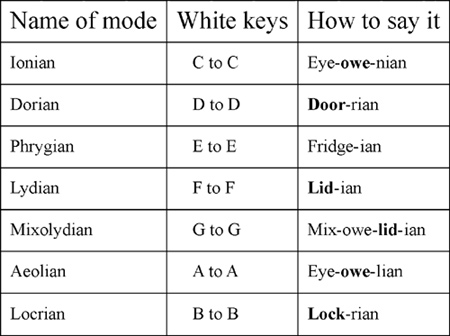
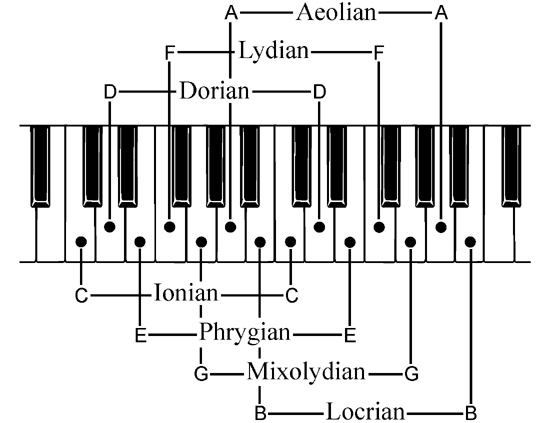
The modes as steps
The important thing about any scale (including the modes) is the pattern of whole tone and semi-tone steps between the scale degrees (the notes of the scale).
Although every white piano key is the same distance from its neighbour, the notes that neighbouring keys make are not all the same distance apart.
Where there is a black key between them (at the back of the keyboard), the notes they produce are a whole tone apart.
Where there is no black key between them – between B and C, and E and F – the notes they produce are only a semi-tone apart.
Here is the previous diagram showing the whole tone (W) and semi-tone (S) steps between the next-door white keys.
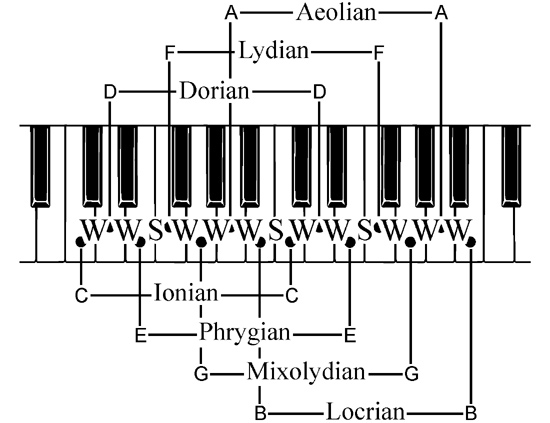
Here are the seven white-key modes in music manuscript with the letters W (for whole tone) and S (for semi-tone) between the notes. Essentially, the modes are these gaps between the tones.
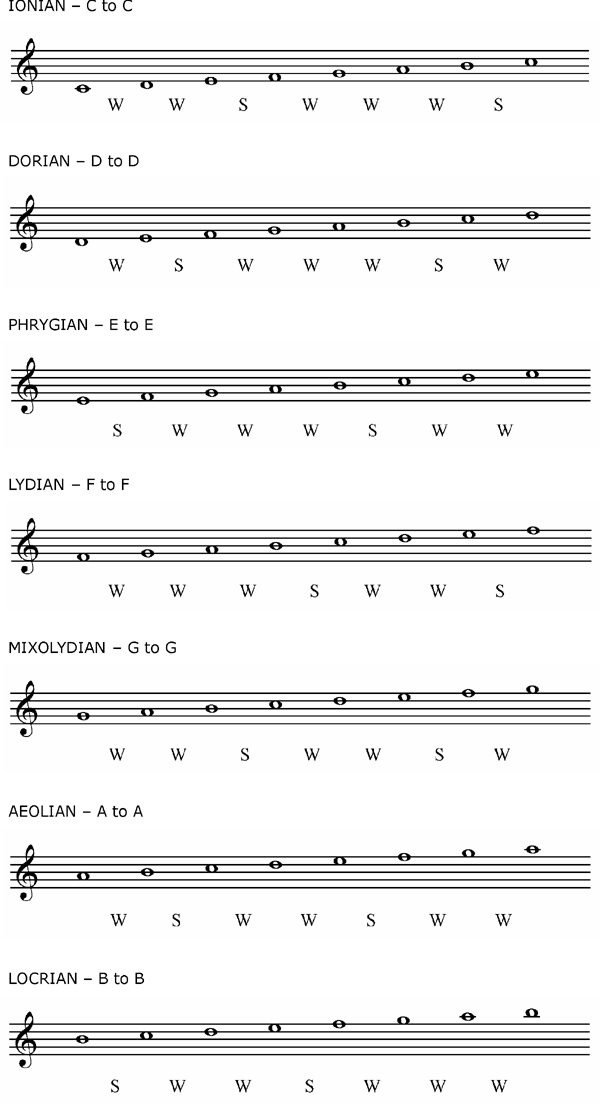
Without the music, the whole-tone/semi-tone patterns of the modes are as follows.
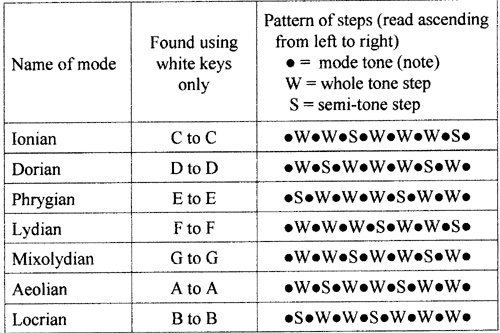
You can read off these whole tone/semi-tone distances on the marked-up keyboard diagrams above.
Transposing the modes
If you play these seven modes one after another using only the white piano keys, our modern musical ear hears someone playing a scale of C major starting on different notes (which in fact is exactly what is happening).
To hear the true character of the modes you have to transpose them all to the same starting note. That is, build all seven modes on the same starting note, using the whole tone/semi-tone step patterns.
You can do this using the table above, providing you know how to form whole tone and semi-tone steps on your instrument. Here are the seven modes built on C, in manuscript.
Notice that you now have to state the name of the tonic (home note): C Ionian, C Dorian, C Phrygian, etc.
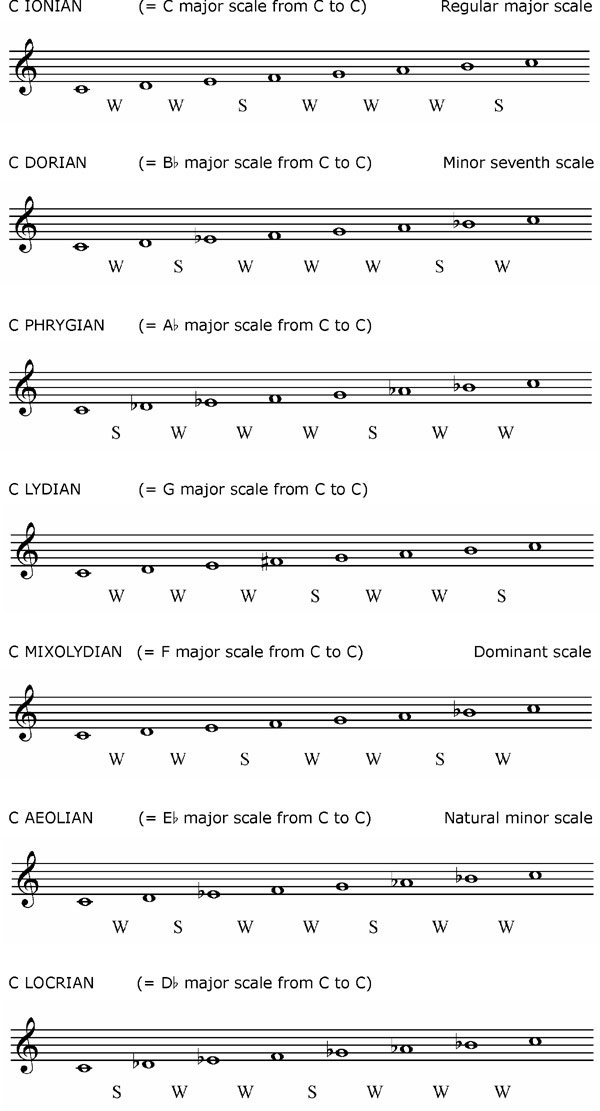
Building modes using key signatures
Notice in the table above the references like (= F major scale from C to C). You can use key signatures in this way to tell you which of the semi-tones in the octave to use to create your chosen mode.
For example, to play Dorian mode from D, you use just the white keys – the C major scale tones, in fact. C major is a whole tone below D. Using this rule, you can play the Dorian mode from G using the scale tones of F major.
Likewise, if the scale tones of C major – the white piano keys – from F to F give the Lydian mode (and C is a fifth above F), then the Lydian mode on A will use the key signature of E major.
Here is a table which shows this information – for the white keys only.
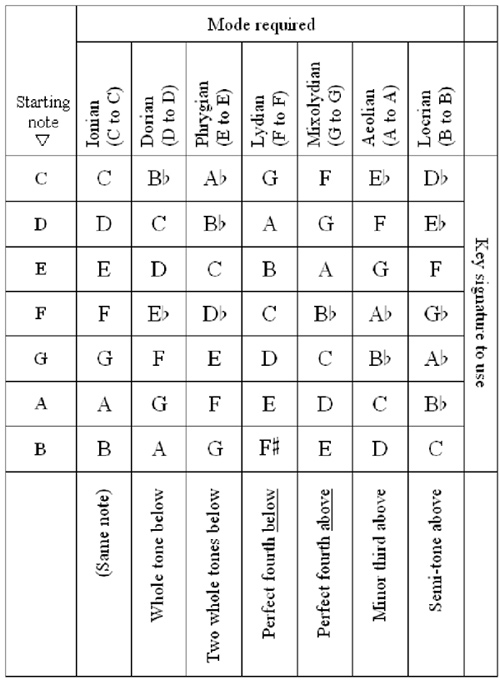
Here are the key signatures required.
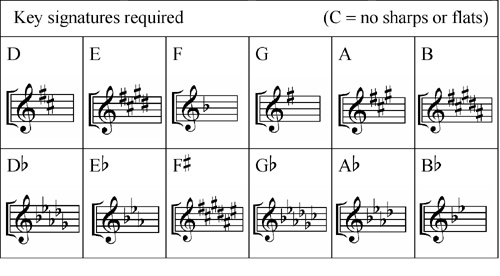
Here are the examples written out for C. Note that the accidentals are still placed in the music itself (in brackets) to show which notes the key signature affects. This would not normally be done.
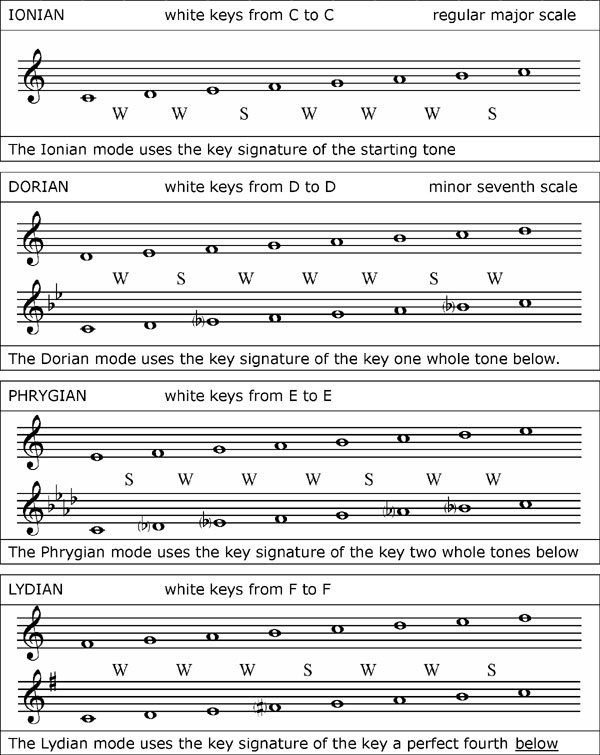
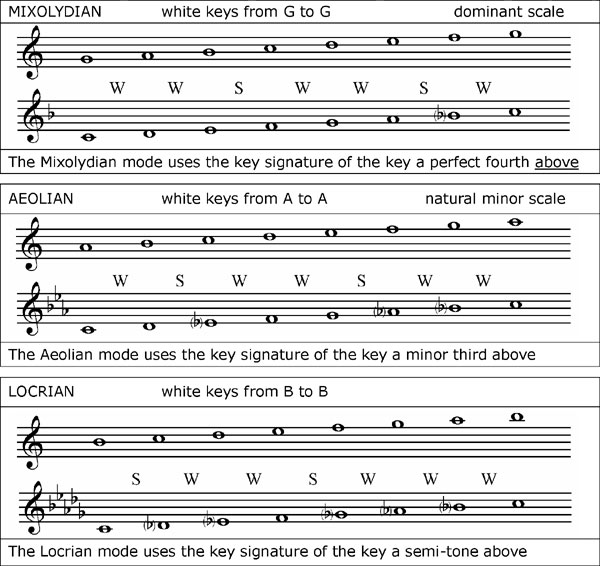
How the modes differ from the major scale
Another helpful perspective is to consider how the modes differ from the modern major scale. You have to know your major scales, of course, and remember that in the major scale, the semi-tone steps are between the third and fourth, and seventh and eighth (octave) scale degrees.
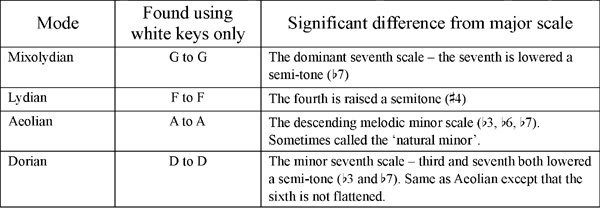
Modes exercises
Building all seven modes on every possible starting note using the whole tone/semi-tone step patterns, is not necessary.
The reason is that, for all practical purposes, only three modes (apart from the Ionian/major) survive – the Mixolydian, Dorian and Aeolian. The other modes are too close to the modern major scale to remain distinct.
(For example, if you play B to B on the white keys – the Locrian mode – the modern ear simply hears the C major scale being played from the seventh degree to the seventh degree.)
You should however be able to build these three modes, not only to use as improvising scales, but in order to find the useful families of chords we explore in the workbook modules.
There is already a table in this module showing all the modes built on C and a table of their whole and semi-tone steps. If you know how to form whole tone and semitone steps reliably on your instrument, you can use this table to play the modes starting on any note.
So, using all the resources given so far, create the following modal scales on the given tonics (home/starting notes).
First set Only one black key (per scale) needed.
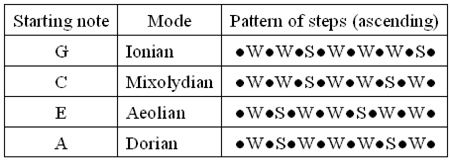
Second set Two black keys required.
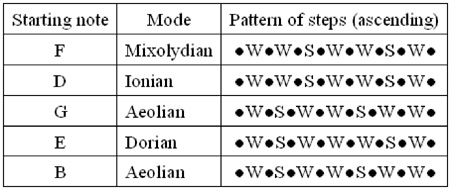
Third set Three black keys required.
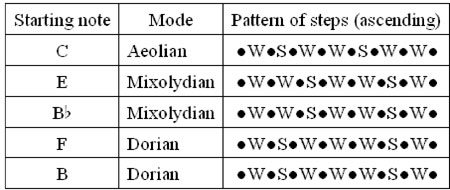
|
OUT NOW! |
THE MUSICARTA BEAT & RHYTHM WORKBOOK At last! An effective approach to keyboard rhythm & syncopation skills. Learn more! |
ONLY $24.95! |
MODES |
The MusicartaA methodical approach to keyboard syncopation for
|
PUBLICATIONS
exciting keyboard
creativity courses
CHORDS 101
WORKBOOK

~HANON~
video course

Musicarta
Patreon
PENTATONICS
WORKBOOK
video course

Creative Keyboard
video course

BEAT AND RHYTHM
WORKBOOK

- Volume 1 -

12-BAR PIANO
STYLES WORKBOOK

MUSICARTA MODES
WORKBOOK

PIANO STYLE

CANON PROJECT
video course

VARIATIONS
video course


- Piano Solo -
video course

- Piano Solo -


YouTube playlists





 THE LOGO
THE LOGO
